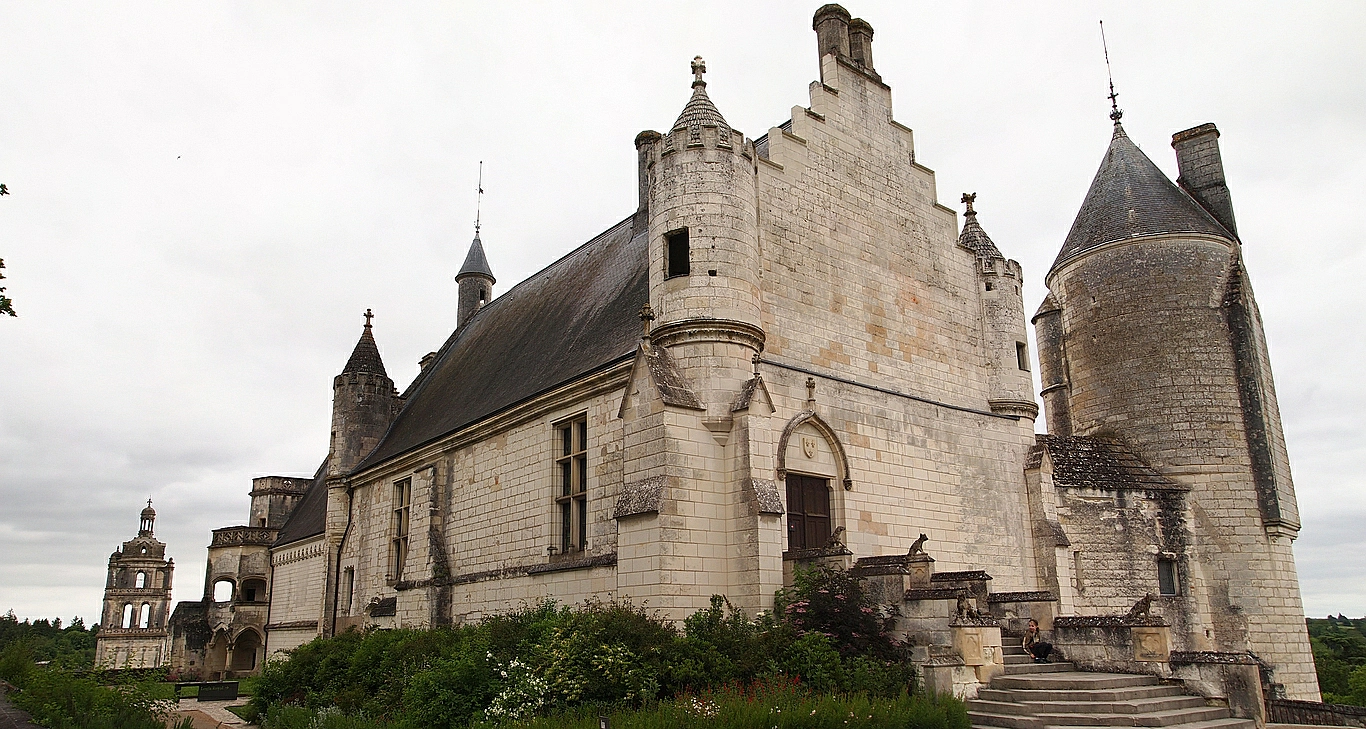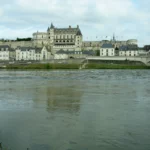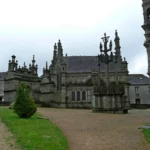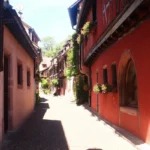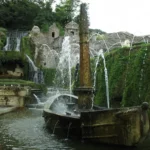Last Updated on 04/07/2024
Loches left the stage of history earlier than other cities of the Loire region, so it seems that not a single stone has been moved in it since the Middle Ages.
In this post we will see the large castle complex in Loches, and also the rose village of Chedigny.
Loire Castles. Blois region attractions map
Loire valley Chambord castle
Loire Valley: Blois
Around Chenonceau: attractions map from Amboise to Loches
Amboise Castle, Clos Lucé and what else to see
Loire valley Chenonceau castle
Attractions of Tours city
Around Chinon: Loire Valley map from Tours to Angers
Loire cycle route. Tours – Villandry
By car, bike and public transport in the Loire Valley
Best castles to see in Loire Valley
Chedigny village
The village of Сhedigny is located relatively close to Loches, but it cannot be reached by public transport. The nearest transport stop is the railway station, 4 km away.
Even on a weekday there are many tourists walking around the village. They are attracted by the numerous rose bushes planted near every house. The efforts of the residents are recognized with a title a “remarkable garden.” This title is given only to a few French villages and is usually given to individual gardens.
The “garden” consists of one and a half streets and one church. There is also a fenced garden where people can enter for a fee, but it has not yet acquired a top shape and most visitors, after appreciating the garden with a glance through the fence, move on.
For entertainment, there are creative studios. At the end of May, a rose festival is held.
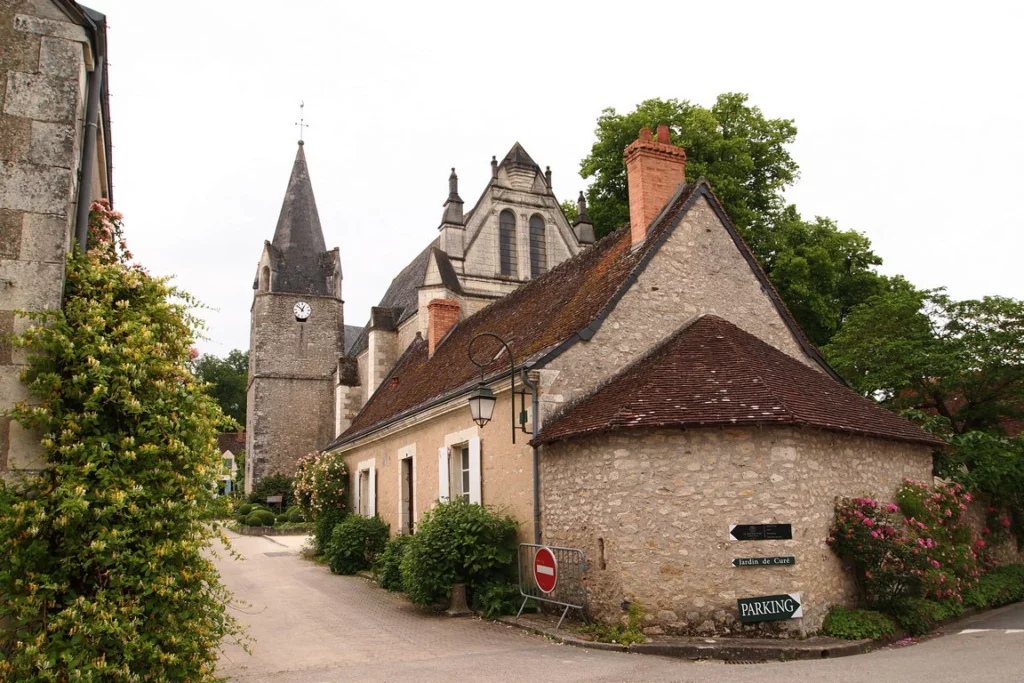


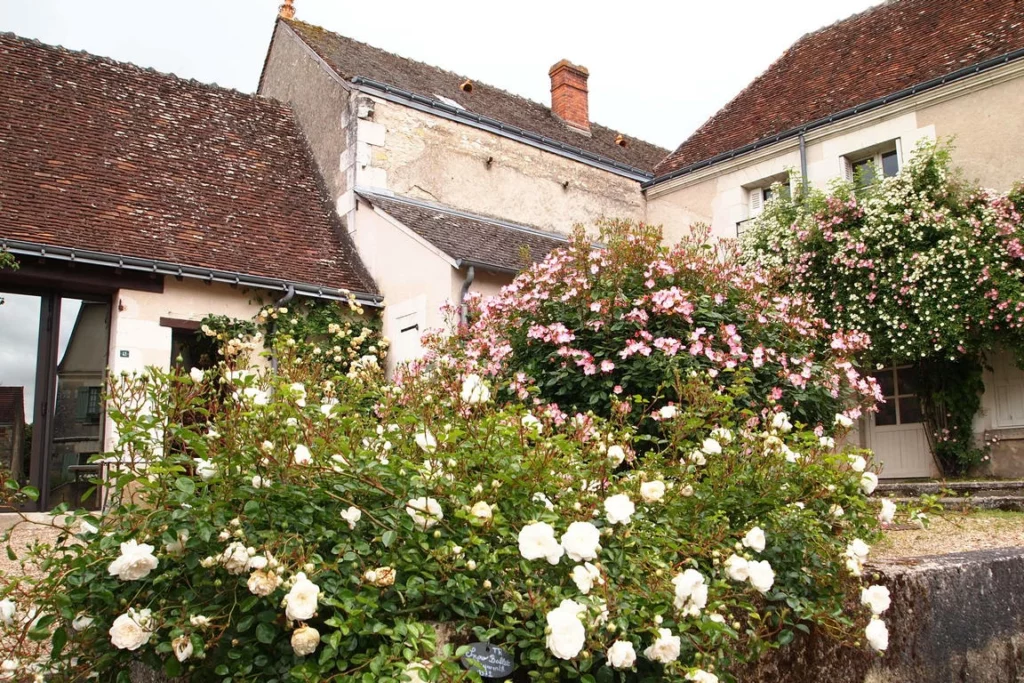
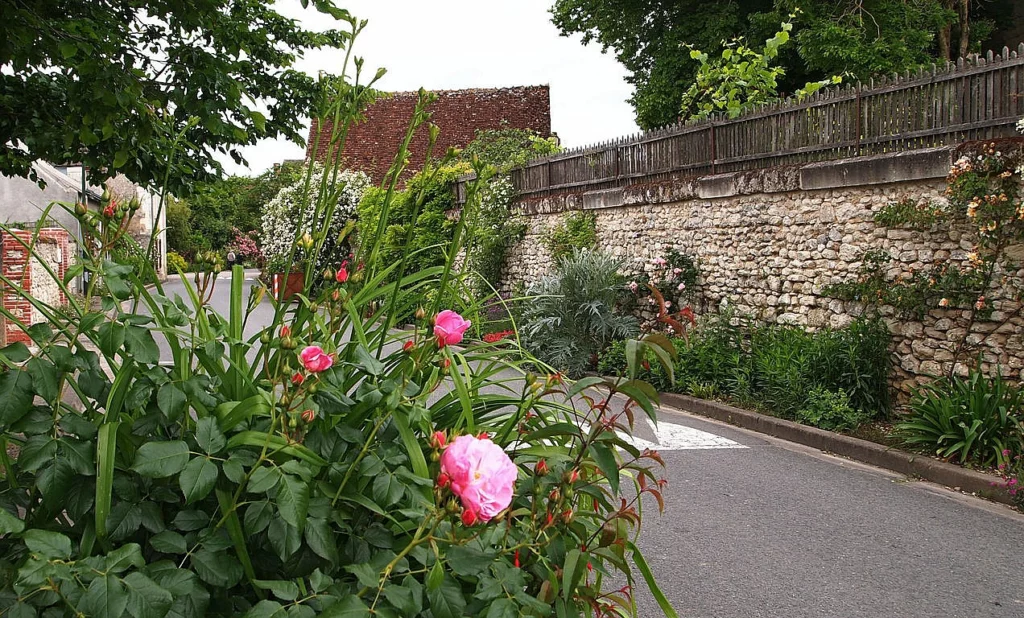



Loches castle and old town
You can easily reach Loches by train from Tours.
When preparing the trip, I underestimated Loches: I was expecting an easy walk along a couple of preserved streets and an easy inspection of the castle ruins. In my mind, I made various vague plans for what else I could add later so that the family wouldn’t protest too much.
However, the castle complex turned out to be much more powerful than expected. Despite the fact that the interiors, of course, have not been preserved, it just takes about 3 hours to climb all over it. If you also visit a small art museum and walk around the fortification or look into the town on the other side of the Indre, then the trip will take most of the day.
Loches came to the Counts of Anjou as a dowry at the beginning of French history. And since at that time there were constant territorial disputes with the neighboring county of Blois, the Angevin Count Fulk built in Loches a large square donjon in the 11th century.
The Counts of Anjou continued to marry successfully and secure territories for themselves, eventually marrying to the English throne and possession of all of western France. Henry II Plantagenet enlarged and strengthened the fortress at Loches. Later, his son Richard the Lionheart was noted there, whose brother John the Landless, however, lost his possessions to the French crown.
This happened at the beginning of the 13th century, and from then on the military history of Loches castle ended. In the 13th and 14th centuries, the castle was surrounded by walls and a residence was built.
Loches’ finest hour is associated with the Hundred Years’ War, when the possessions of the French kings in the north were captured and they lived in Chinon and Loches. Charles VII especially loved the residence. He lived here with his mistress Agnes Sorel. After the Battle of Orleans, Joan of Arc came to Loches to persuade Charles (this time successfully) to go to Reims for the coronation through the captured territories.
Charles VII was the first king to give his mistress official status. She had great influence and received rich gifts. Charles VII’s son Louis XI hated her because her status offended his mother, and even chased her with a sword when he was Dauphin. After becoming king, Louis XI turned Loches into a prison for high-ranking persons.
After the death of Agnes Sorel (according to the latest data, she was most likely poisoned with mercury immediately after the birth of her premature daughter), she was buried in Loches in the church of St. Ours is next to the residence.
Since the residence lost its royal status, and the fortress lost its defensive status even earlier, the city did not have much importance in subsequent history. Under Francis I, the city itself was a little embellished, but it has remained preserved, which from a tourist perspective, is a delight for us.
So, what do we have as a result of this whole story?
The long hill above the Indre is surrounded by walls. They completely encircle a rather large territory, on which on one edge there is a former royal residence and church, and on the other edge a donjon and its fortifications. There is only one entrance to the fortress, and it is near the church. Narrow streets of the old city lead to the fortress. It is not very big, just a nice, unburdensome addition to the fortress.
We start from the lower parking lot, which is not marked here, but is located to the right of the garden.
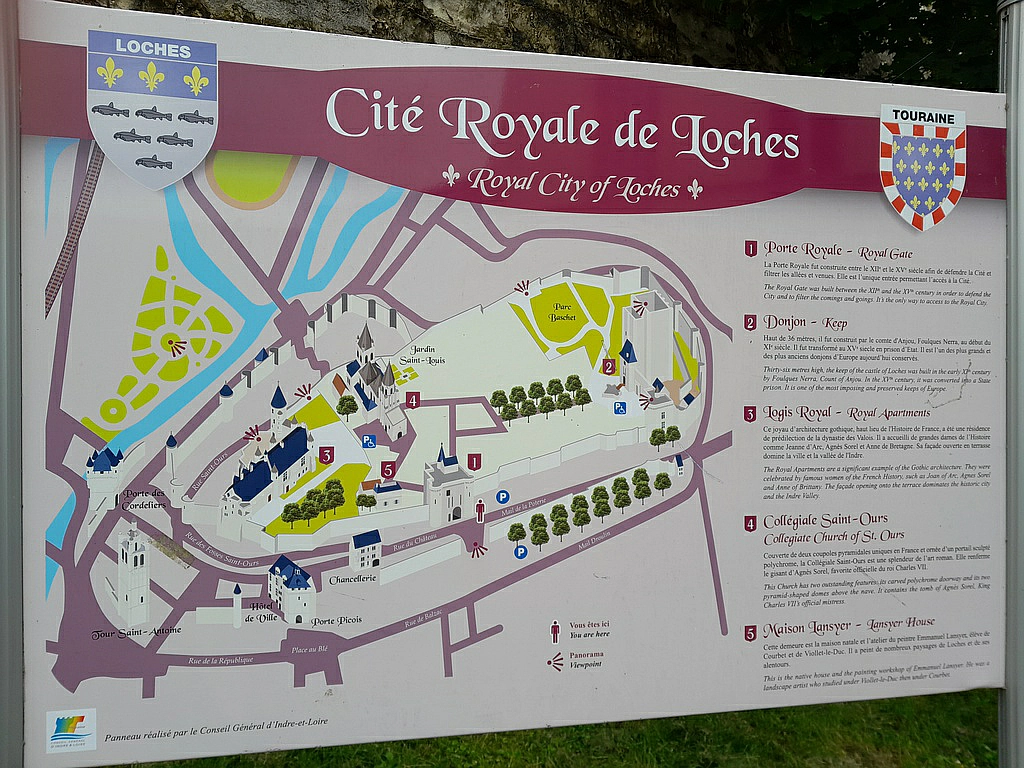
View from the garden. On the right is the residence.

Gates des Cordeliers (15. century).

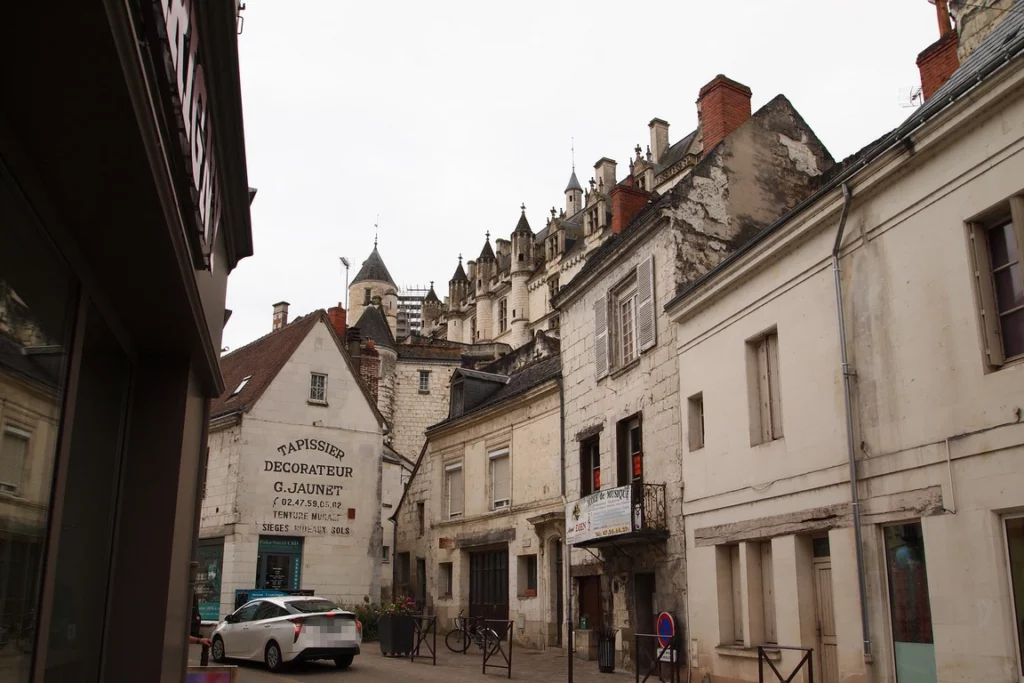
Tower of St. Antoine (16th century).
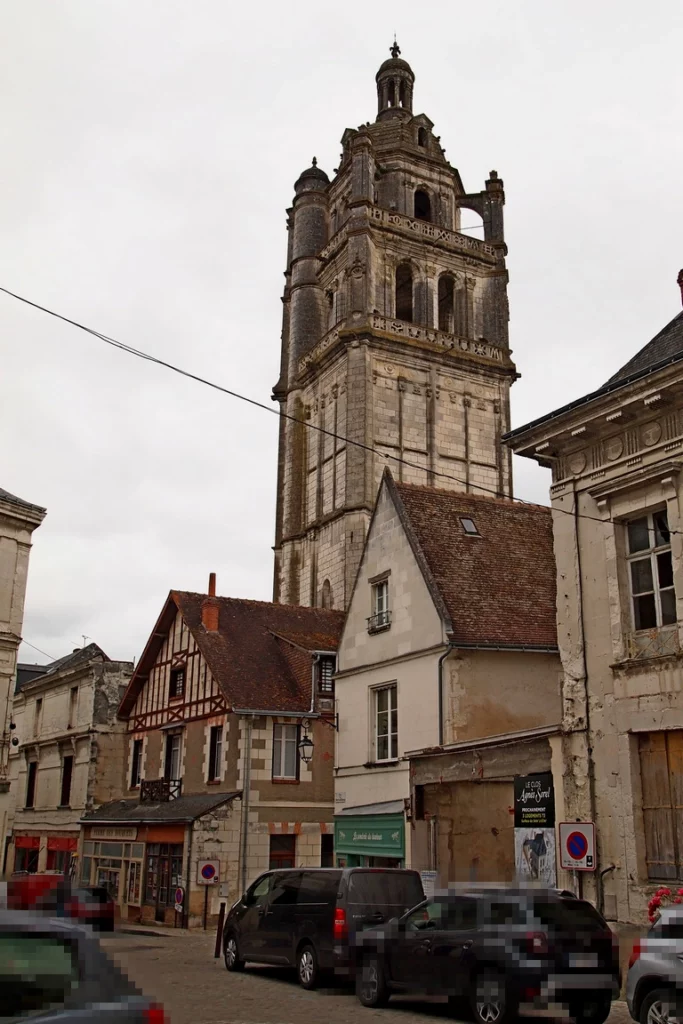

Town Hall

House with a Centaur – small historical exhibition, free entry.
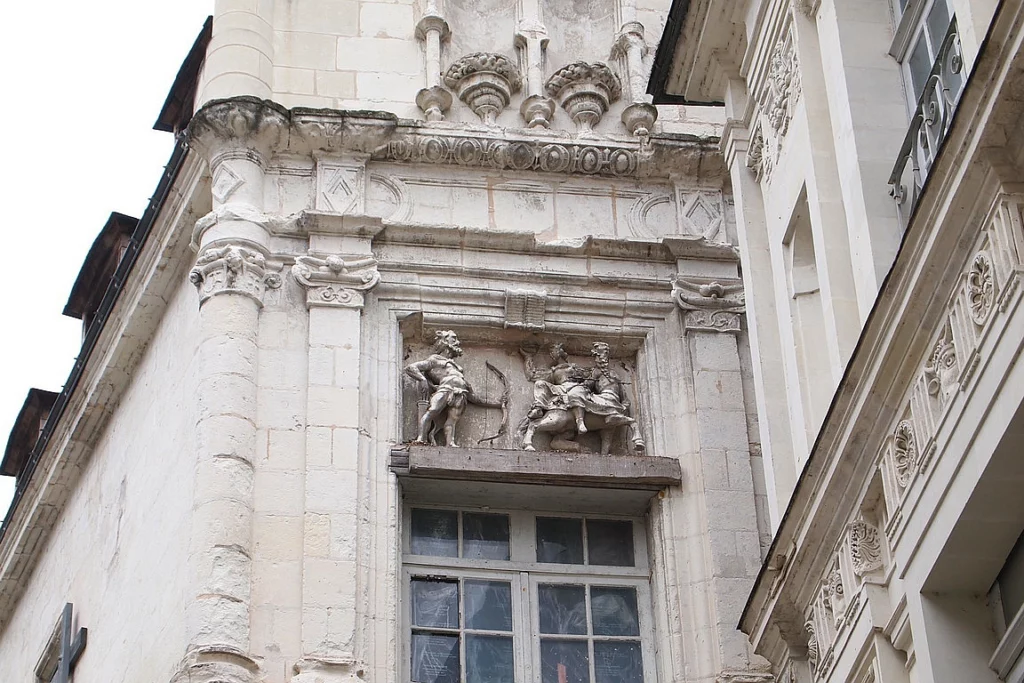
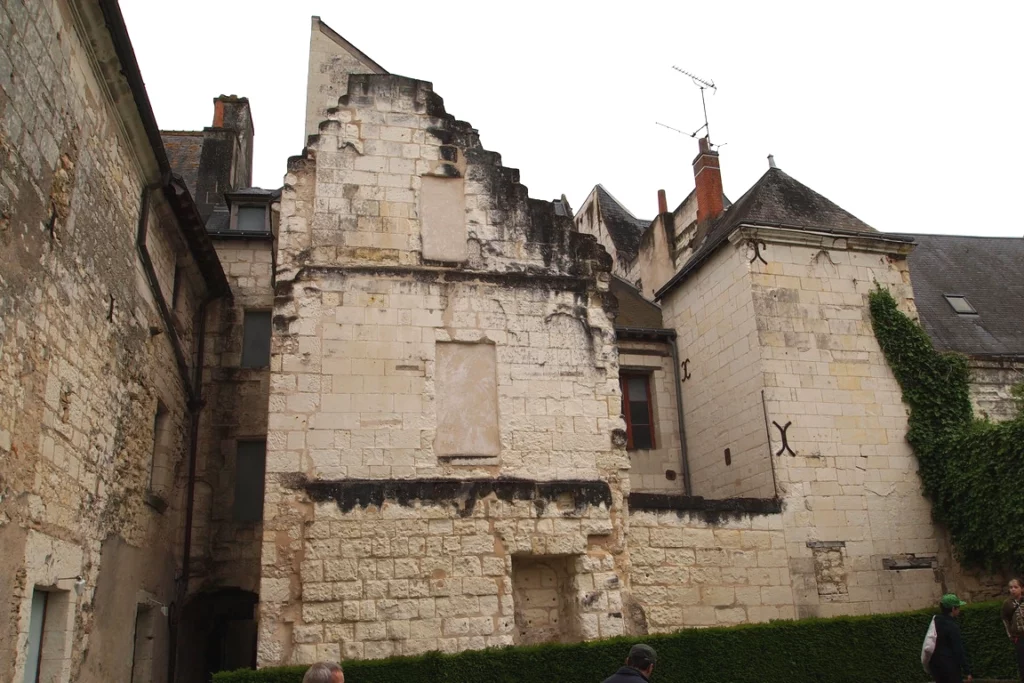
Loches is perhaps the most interesting of the towns on the Loire in terms of small details. Porches, stairs, old roofs…


Second semicircle of walls.

We approached the fortress gates. You can enter the fortress territory for free, go into the church, and see the donjon from the outside. But to approach the residence or get inside the donjon, you need a ticket (common for both parts, so you need to keep it). The residence can be viewed freely (everything is signed), the donjon can be viewed with a tablet (included in the price). The tablet tells the story and shows interactive images.

Church of St. Ours (11th-12th centuries, Gothic and Romanesque style) was in deep renovation.
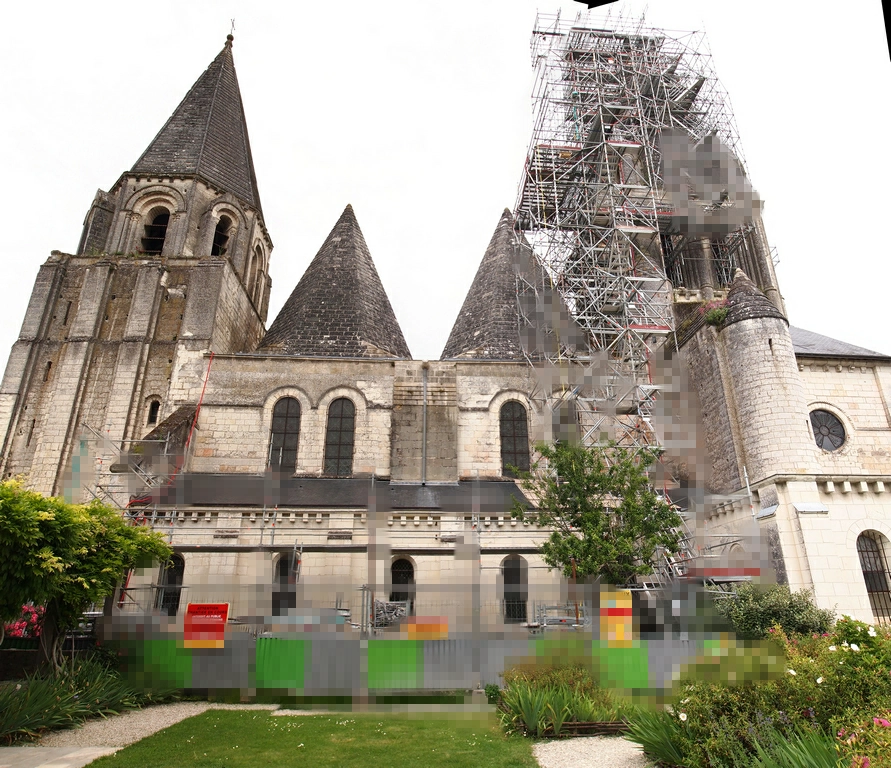
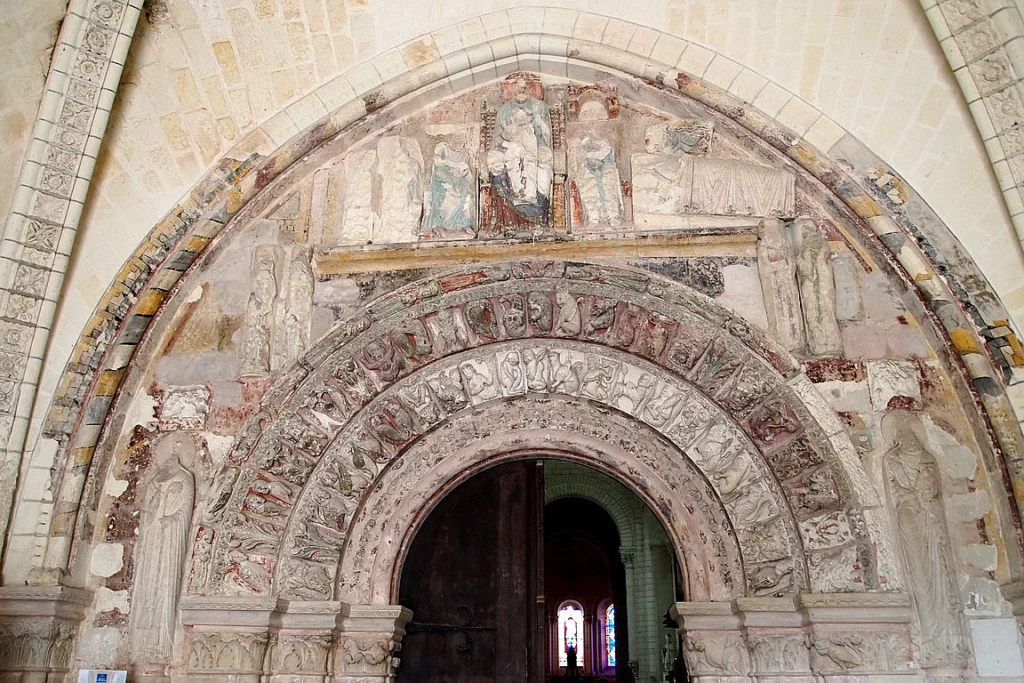
The church was damaged during the French revolution, the burial place of Agnes Sorel was destroyed. In 2005, the tomb was reconstructed.
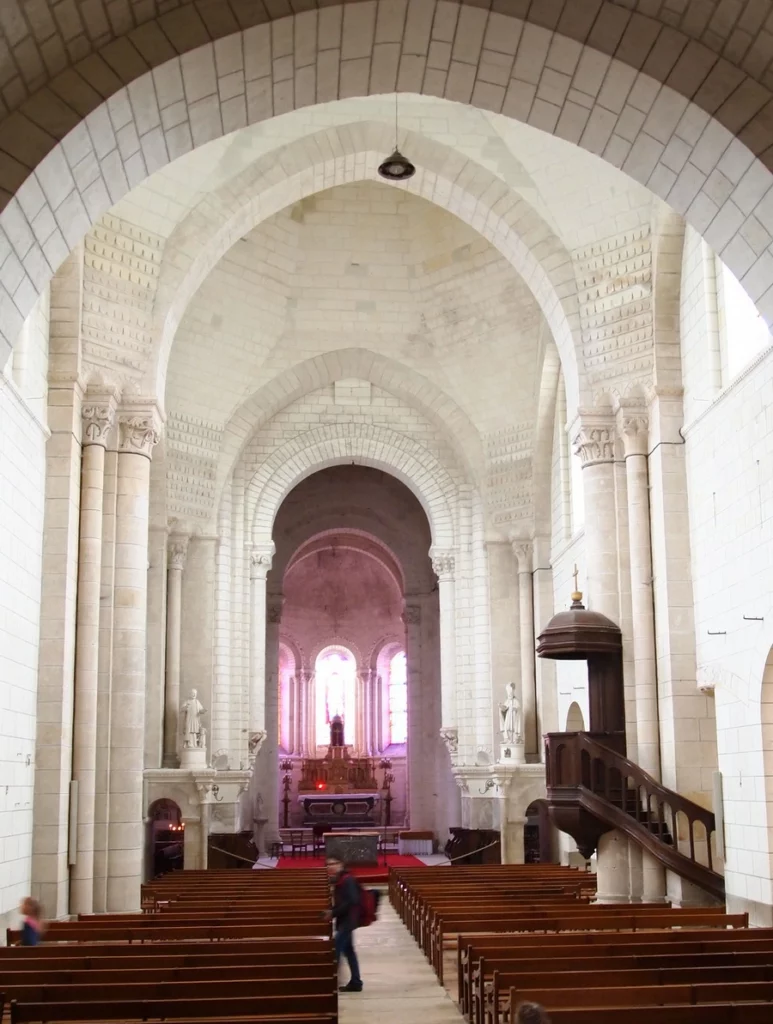
The residence has, in fact, only one floor. There are no interiors, but there is some interesting furniture and decor from the 15th-16th centuries (tables, chests, some dishes). The right side of the building is from the 14th century, the left is from the 15th century.





Chapel of Anne of Brittany
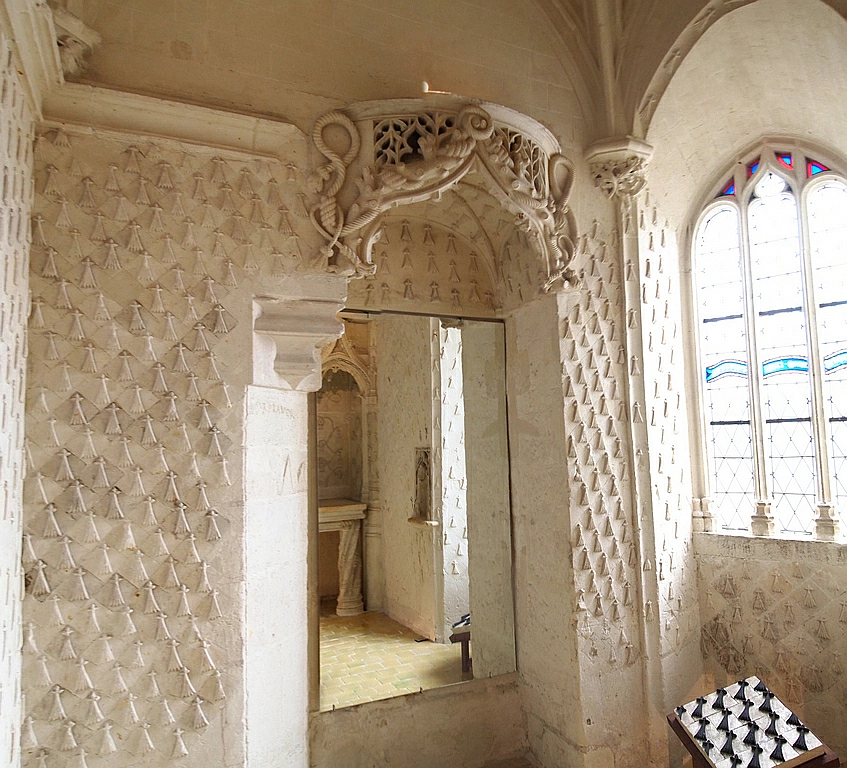
Let’s move on to the donjon. You can see two regular towers and one dungeon tower. The stairs are steep everywhere, especially in the dungeon. Donjon on the left, round tower on the right.

Tourists enter the castle through a small 14th-century house, the so-called governor’s apartment. The first to be examined is the adjacent round tower (25 meters high), where noble prisoners had relatively comfortable apartments. The drawings and figures were made by prisoners. There is an observation deck at the top.

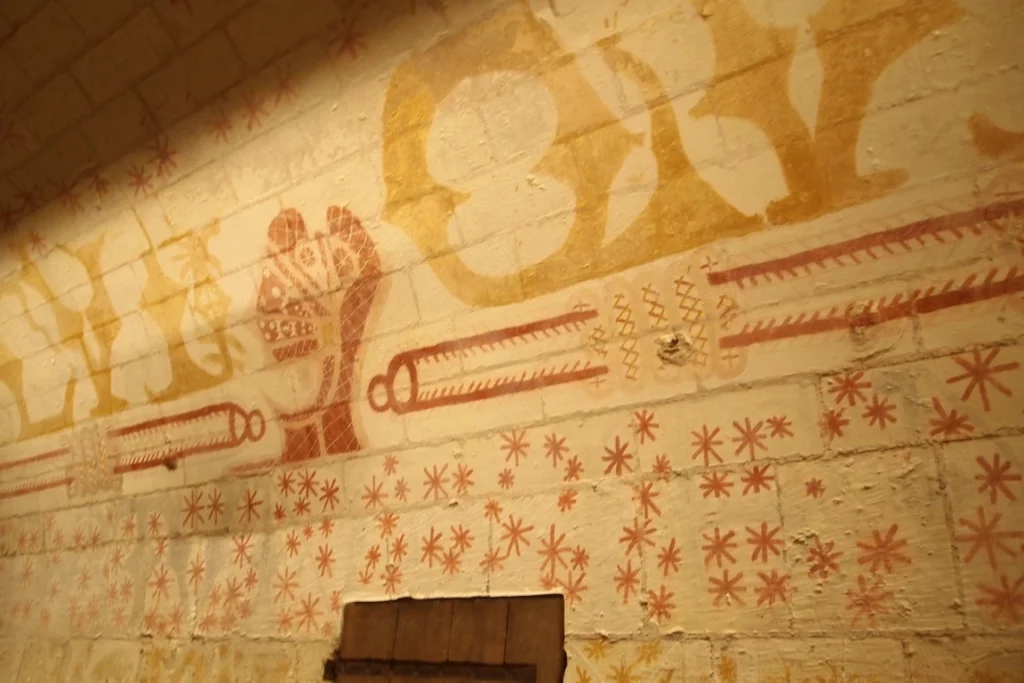
View from the round tower terrace
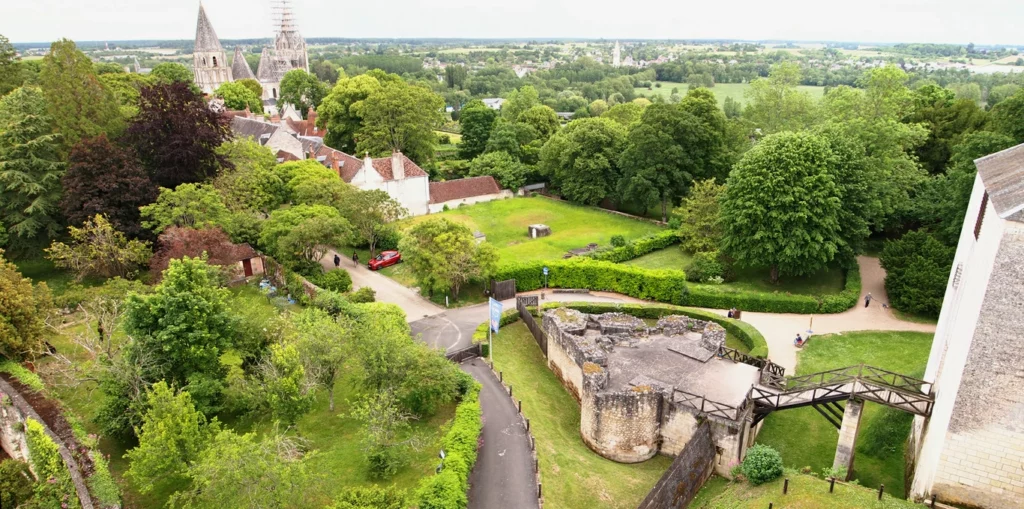
The Martelet dungeon tower is supposed to be explored second. It does not rise above the level of the castle, but goes down several levels (26 meters). The most famous prisoner of the Loches Castle, the Duke of Milan Lodovico Sforza, the former patron of Leonardo da Vinci, was kept in these terrible dungeons. Lodovico Sforza spent 4 years in the dungeon and died there.
Martelet Tower on the right.

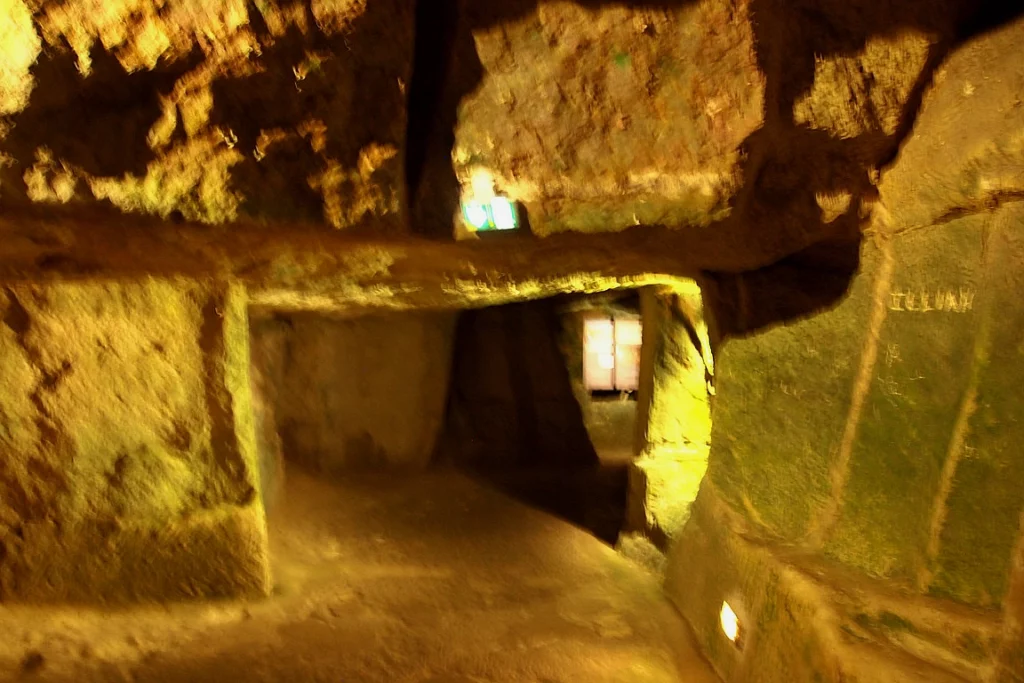
Exit from the tower via a steep staircase from underground. Don’t forget to see the apothecary garden nearby.

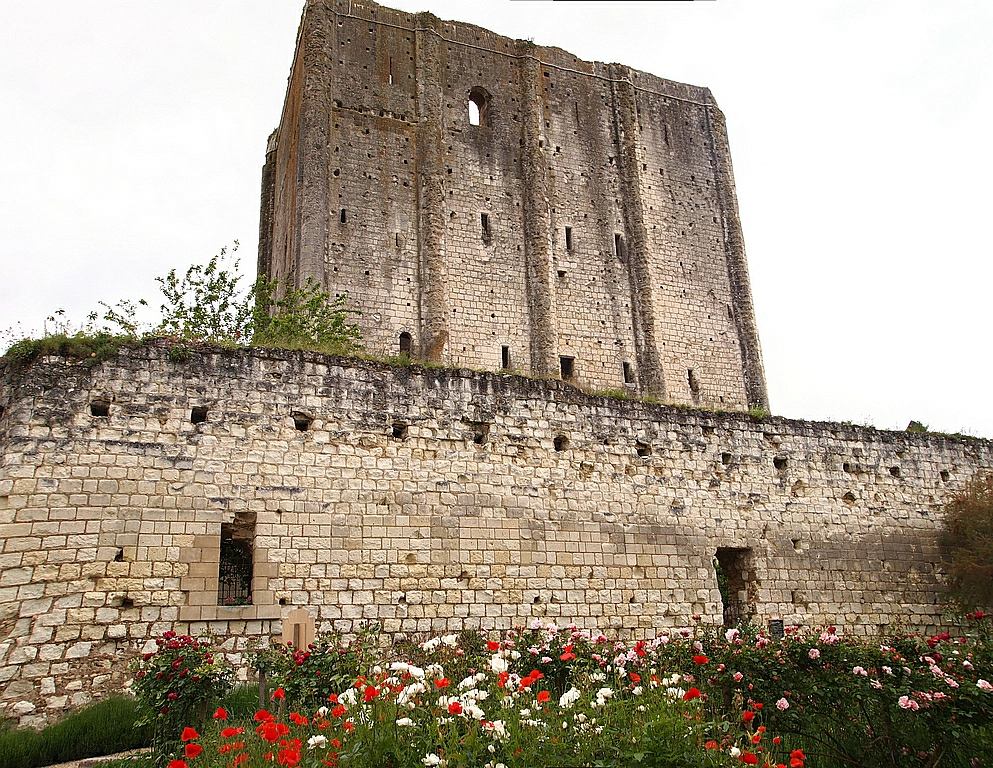
Finally, the last part is the donjon itself. The tower is huge – 36 meters. Only the walls remain, but you can climb to the very top.

Bottom part. Down – another three meters, at the top there is a net. Let’s remember the distance.

And now what’s on top. The net is below.
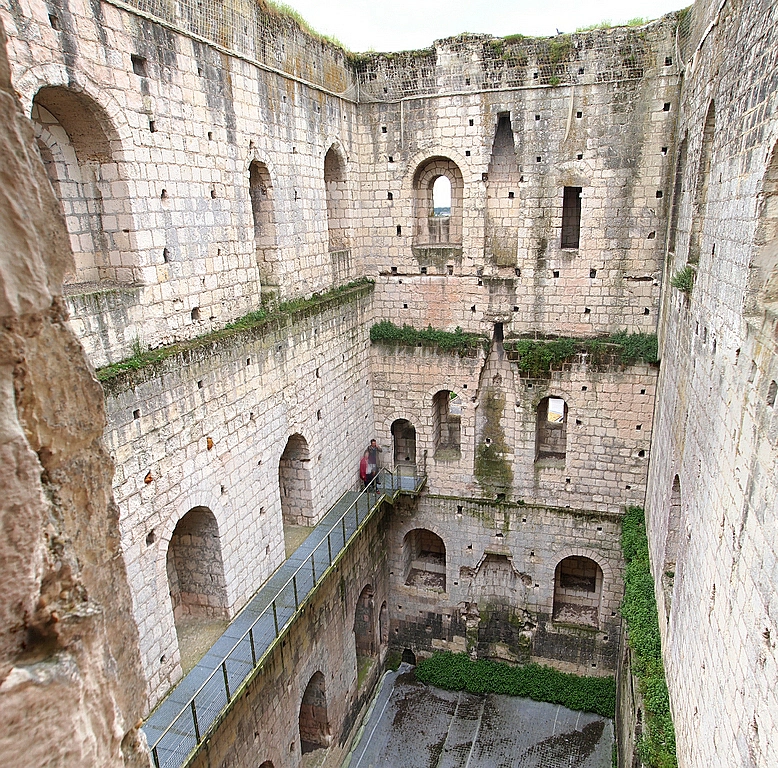
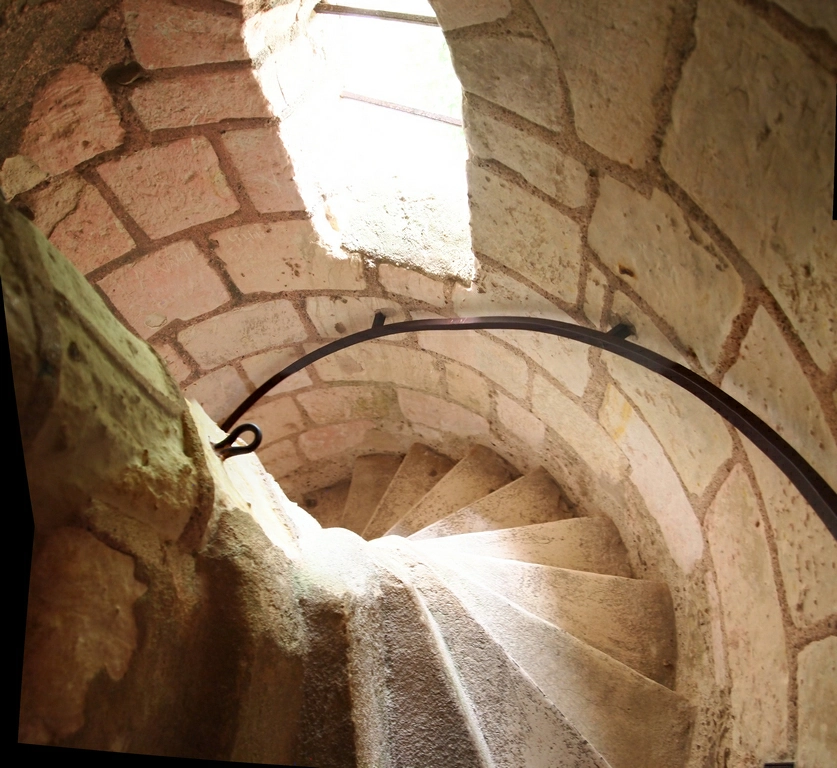
If you still have energy left after climbing 25, 26 and 36 meters up and down, you can visit the small gallery at the Church of St. Antoine, which contains, among other things, two paintings attributed to Caravaggio. It is in the city center, opposite the entrance to the fortress.
And if you still have some strength left after this, then on the other side of the Indre there is another small, pretty old town of Beaulieu-les-Loches: narrow streets in the same style as in Loches, but simpler, a museum mill and a church.
Other attractions of the region on the map: 2. Around Chenonceau: map from Amboise to Loches
Loire Castles. Blois region attractions map
Loire valley Chambord castle
Loire Valley: Blois
Amboise Castle, Clos Lucé and what else to see
Loire valley Chenonceau castle
Attractions of Tours city
Around Chinon: Loire Valley map from Tours to Angers
Loire cycle route. Tours – Villandry
By car, bike and public transport in the Loire Valley
Best castles to see in Loire Valley

